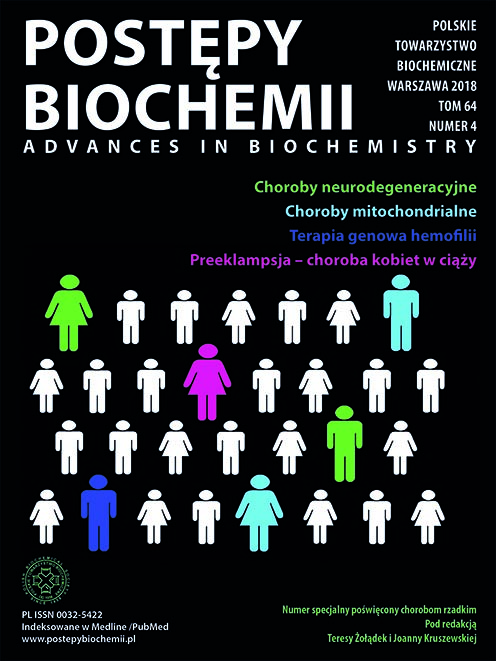Molecular mechanisms of genistein action in the light of therapies for genetic and immunological diseases
DOI:
https://doi.org/10.18388/pb.2018_140Abstract
Genetic and immunological diseases, despite many attempts to develop effective treatments, still remain a great challenge for medicine. Current therapies of these diseases consist of pharmacological alleviation of symptoms, rehabilitation and psychological help which, although very important, are not sufficient. Therefore, searching for new therapeutics which could remove the major causes of these diseases is of particular importance for the society. Natural compounds reveal many biological activities which makes them candidates for drugs in such diseases. One of them is genistein, a compound from the group of flavonoids. As it affects multiple processes, genistein has become in the center of interest of many scientists working on diseases of various etiology, course and inheritance. It was used in experimental therapies of some genetic diseases (Huntingtonâs disease, amyotrophic lateral sclerosis Parkinson disease, cystic fibrosis), as well as autoimmunological diseases and allergies. Clinical trials with the use of genistein in treatment of patients suffering from Alzheimerâs diseases and mucopolysaccharidosis type III are ongoing. The employment of differential properties of genistein in attempts to treat each of these diseases is of special interest. In this review, detailed molecular mechanisms of genistein action are summarized in the light of therapies of the above mentioned genetic and immunological diseases, including description of therapeutic potentials of each activity of this isoflavone, efficiency of its action, and its potential use as a drug in the future.
Downloads
Published
Issue
Section
License
All journal contents are distributed under the Creative Commons Attribution-ShareAlike 4.0 International (CC BY-SA 4.0) license. Everybody may use the content following terms: Attribution — You must give appropriate credit, provide a link to the license, and indicate if changes were made, ShareAlike — If you remix, transform, or build upon the material, you must distribute your contributions under the same license as the original. There are no additional restrictions — You may not apply legal terms or technological measures that legally restrict others from doing anything the license permits.
Copyright for all published papers © stays with the authors.
Copyright for the journal: © Polish Biochemical Society.




